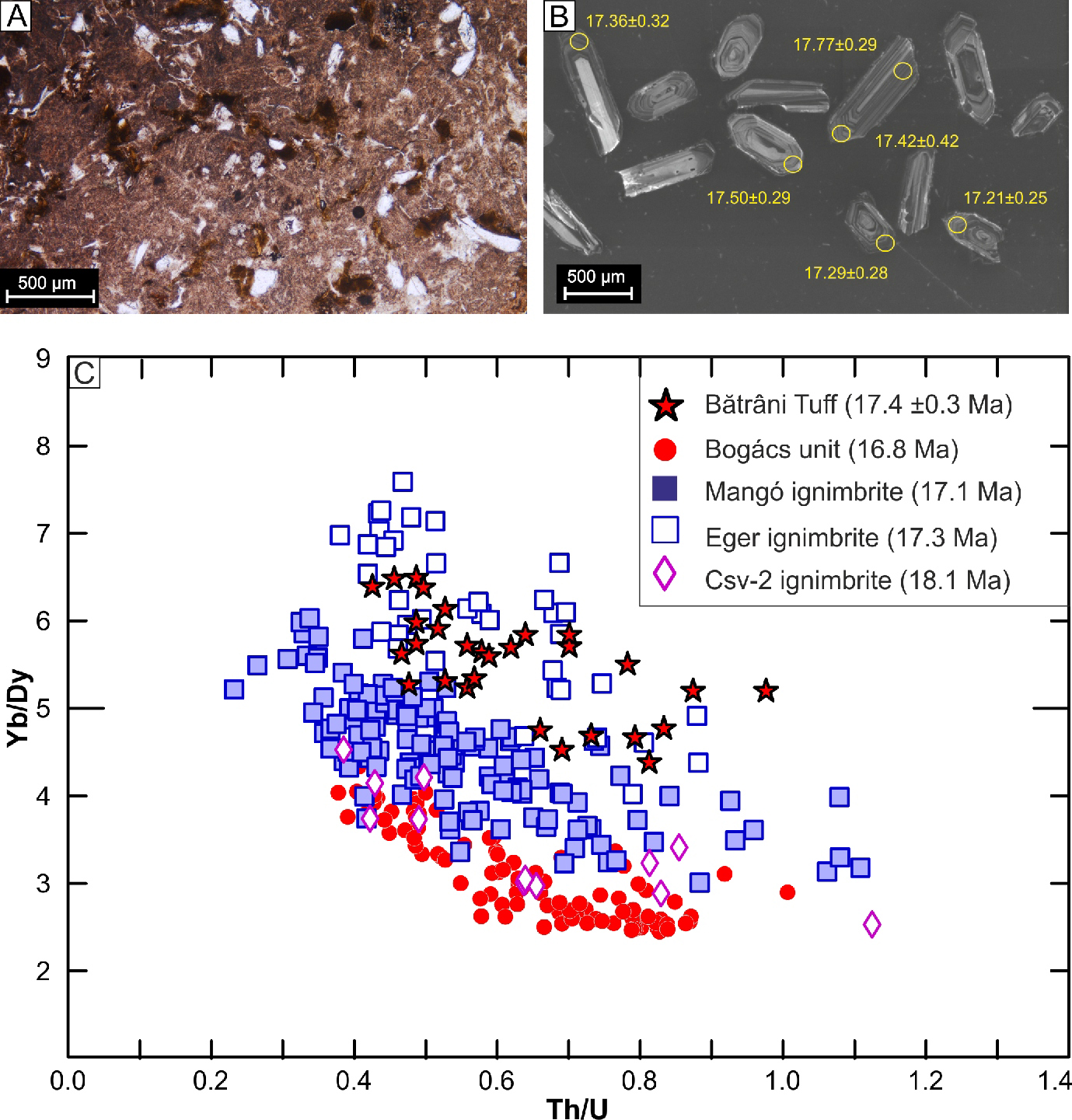Réka Lukács, the researcher of the Institute for Geological and Geochemical Research of the ELKH Research Centre for Astronomy and Earth Sciences (CSFK) and her co-workers suggested in their paper published in 2018 that the largest volcanic eruptions in Europe for the last 20 million years occurred in the Pannonian Basin. She analyzed tiny (100-200 micron sized) zircon crystals for Uranium and Lead isotopic ratios to determine the eruption ages of the silicic pyroclastic rocks cropping out in the foreland of the Bükk Mountains (Bükkalja). These ages showed a remarkably good correspondence with the ages of the volcanic materials preserved in sedimentary successions several hundred of kilometers from Bükkalja. Thus, they pointed out that the explosive volcanic eruptions at 17.3, 17.1, 14.9 and 14.4 million years ago provided several hundred cubic kilometers of volcanic deposit and affected extensive areas of Europe. The papers presenting the research have been published in the scientific journals Gondwana Research, Journal of the Geological Society, and Geological Quarterly.
Réka Lukács and her co-workers published three scientific papers lately as a result of their FK OTKA-NKFIH research project and these gave further support to their former suggestion. In the paper presented in the prestigious Gondwana Research, she worked with Mihovil Brlek, a Croatian scientist, among others and using the geochemical fingerprints of zircon they pointed out that the studied pyroclastic rocks in Croatia derived from the 17.3 Ma Eger eruption. In addition, they proposed that deposition occurred from an unusually far-reaching (>100 km) pyroclastic flow. Furthermore, they found another volcanic occurrence, which was successfully correlated with a bit older, 18.1 Ma eruption. In another paper Réka Lukács worked with Răzvan-Ionuț Bercea, a Romanian researcher, among others and studied a volcanic formation cropping out in the Carpathian bend zone. The zircon ages and trace element compositions clearly showed that this was derived from the 17.3 Ma Eger eruption. Thus, their result provided another evidence that this volcanic event was enormous. Finally, in the third paper in collaboration with Branimir Šegvić and Mathias Harzhauser and others, they used zircon age and trace element data again to point out that the studied volcanic material in the Vienna Basin belonged to the 14.4 Ma Harsány eruption. Thus, this was another large eruption and in addition, the determined age of the volcanic layer helped also to constrain the time of an important sea transgression.
These three new papers provide further support that the silicic explosive eruptions in the Pannonian Basin between 14.4 and 18.1 Ma were indeed very large, with volcanic ash material falling even several hundred kilometers away. Furthermore, these new results justify the viability of the novel zircon fingerprinting technique introduced by Réka Lukács and her co-workers in their paper published in 2021 for correlating volcanic deposits and constraining magma evolution. This method uses a combination of in-situ zircon U-Pb ages and trace element composition, which reflects the chemical properties of the erupted magma. They can provide diagnostic information on a volcanic eruption and can thus be used as a fingerprint to identify the source of the eruption products even at large distances. This methodology can be particularly important when the volcanic material is thoroughly altered in a continental or marine environment, while zircon, as a highly resistant crystal, provides the only witness of the source of the volcanic eruption.

Zircon fingerprinting evidence that the volcanic material in the Carpathian bend area
derived from the 17.3 Ma Eger eruption (Bercea et al. 2023)
Réka Lukács’s collaboration with scientists from the nearby countries is continuing and this can yield further new results on the areal extent of the large silicic volcanic eruption occurred in our region as well as give constraints on their size and the effects on environment.
Publications:
Brlek et al. (2023). Tracing widespread Early Miocene ignimbrite eruptions and petrogenesis at the onset of the Carpathian-Pannonian Region silicic volcanism. Gondwana Research, 116, April 2023, 40-60. DOI: 10.1016/j.gr.2022.12.015
Šegvić et al. (2023). U–Pb zircon age and mineralogy of the St Georgen halloysite tuff shed light on the timing of the middle Badenian (mid-Langhian) transgression, ash dispersal and palaeoenvironmental conditions in the southern Vienna Basin, Austria. Journal of the Geological Society, 180. DOI: 10.1144/jgs2022-106
Bercea et al. (2023). Insights into the palaeoenvironments, structure and stratigraphy of the lower Miocene of the Eastern Carpathians Bend Zone, Romania. Geological Quarterly. DOI: 10.7306/gq.1673